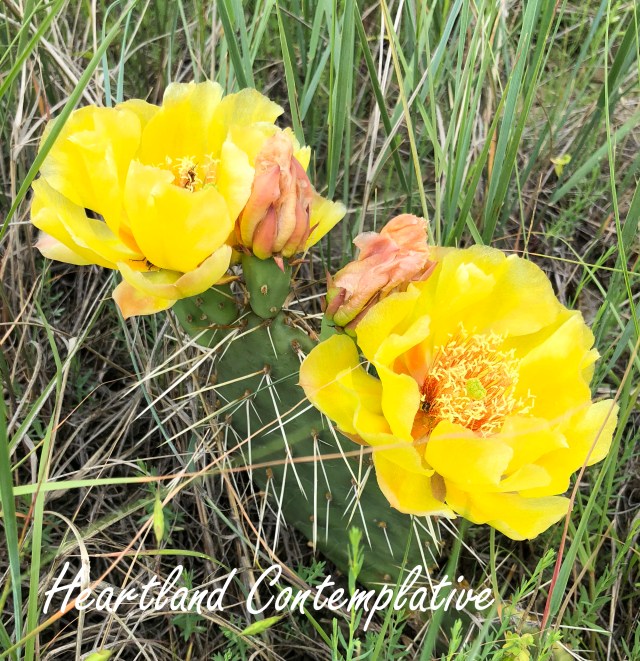I was navigating the backroads home one evening when I happened upon a committee of turkey vultures closing in on the carcass of a possum lying there amidst the stubble of cornfield. They were waddling and hopping and gliding toward it until I interrupted them by rolling to a stop not too far away. I watched them for a bit, marveling at their bald heads and their interesting combination of awkwardness and grace. Soon, though, I began to feel guilty for keeping them from their dinner, so I moved on.

We often think of vultures as ugly birds, hideous and disgusting even, simply for being what they are. I’ve come to view them much more compassionately, however, for reasons that will become clear. I even had my heartstrings tugged by one who’d made the mistake of feeding on the crumpled body of a deer too close to the roadside, only to end up flattened beneath the tires of a fast-moving vehicle. Even scavengers are sometimes denied the simple pleasure of a putrid meal in this cruel world!
We humans often think of ourselves as beings of such refinement, don’t we? Unlike the vultures, we dine in places both comfortable to the body and pleasing to the eye. We delight in flavors both subtle and bold, intriguing and familiar. We wield our cutlery with delicate precision, and dab at the corners of our mouths whenever our lips become too moist. We celebrate dishes of elegant simplicity and creative complexity alike, crafted by artisans toiling in their kitchens to elevate to the highest levels the offerings of farmers, butchers, fishermen, and so forth. This dining experience is not simply for survival’s sake. We would do this for the sheer enjoyment of it regardless of the nature of our existence. At least that’s what we like to pretend. We dare not think of ourselves as hunters and gatherers with blood and mud matted in our hair and caked underneath our fingernails. No, that was a previous lifetime, one from which we’ve evolved so far we can scarcely imagine it any longer.
Perhaps that’s why turkey vultures disgust some of us so. We catch glimpses of them riding the air currents, ever-vigilant for the scent of decay, and we’re reminded of what we’d just as soon forget – that death lies in wait just over our horizon, or even in our midst. As much as we’d like to keep it at arm’s length with rituals of refinement, one day it will come for us and there’ll be nothing we can say or do about it. But whereas we might like to run and hide from death, the turkey vulture seeks it out and embraces it. Death is life to them. They thrust their bald heads into its fetid piles and commence to ripping and tearing it with gusto. They fill their bellies with its rotting mess and fly away, to feed their young and then return for more.
When we develop insight into the true nature of emptiness, rather than thoughts of nihilism consuming us, a deep sense of compassion for all beings begins to arise
Is truth big enough to encompass these starkly different realities, and countless more for that matter? Well, off course it is. It is what is, after all. But what kind of truth transcends the reality of turkey vultures and human beings alike? For Buddhists, it is the Heart Sutra. For it is the Heart Sutra which has Avalokitesvara delivering Buddhism’s most transcendent teaching to the disciple, Sariputra, in terms such as the following:
Listen, Sariputra, form is emptiness (sunyata).
Emptiness is form.
Form does not differ from emptiness.
Emptiness does not differ from form.
That which is form is emptiness.
That which is emptiness is form.
The very same applies to feeling, idea, mental formations and consciousness.
Hear, Sariputra, all dharmas (everything that exists) are marked by emptiness.
They are neither created nor destroyed,
Neither defiled nor undefiled,
Neither increasing nor decreasing….
We arise from myriad causes and conditions to do that which we humans do. We are this form for a brief span of time, but this form is absent any absolute and permanent identity that we might call “our own.” Likewise, the turkey vultures, and all of life, and everything. We’re simply matter and energy changing form. That which disgusts one of us is life-giving to the other. That which provides one of us comfort prompts the other to flee for his life.
Vultures play a sacred role in Tibetan culture. So-called sky burials are common there. The body of the deceased is allowed to be eaten by vultures until (hopefully) nothing remains. Vultures, to the Tibetan people, are honored beings. Indeed, when we begin to see reality in terms of the emptiness that the Heart Sutra describes, we see all things as precious, sacred, and worthy of honor. As such, compassion can’t help but arise within us. We see more clearly our connectedness and commonality. Perhaps that’s why Avalokitesvara, the Bodhisattva of Compassion, was chosen to deliver this ultimate teaching on the true nature of reality – emptiness. When we develop insight into the true nature of emptiness, rather than thoughts of nihilism consuming us, a deep sense of compassion for all beings begins to arise – even for the vultures in our midst.
Copyright 2019 by Mark Robert Frank
All images are the property of the author unless otherwise noted.




















